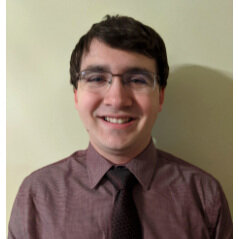Team Post-Quantum Cryptography
Team Post-Quantum Cryptography
University of Alabama in Huntsville
Decoding the Future of Post-Quantum Cryptography
The Team
Matthew Daigle
• MS in Computer Science Candidate at University of Alabama in Huntsville
• BS in Computer Science from University of Alabama in Huntsville
Erik Failing
• BS in Computer Science Candidate at University of Alabama in Huntsville
Angela Allison
• Software Engineer Associate at SAIC
• Former Software Engineer Intern at Raytheon
• BS in Computer Science from University of Alabama in Huntsville
Sean Pagani
• BS in Computer Science Candidate at University of Alabama in Huntsville
• Research Assistant at Information Technology and Systems Center (ITSC)
Original Problem Statement
Department of Defense Engineers need the ability to assess post-quantum cryptography algorithms in order to ensure system encrypted data security.
Beneficiary Discovery Interviews
15
The Innovation
Quantum computing is an operating system that works much faster than traditional computers and allows users to show information beyond just 0s and 1s (bits). Quantum computers have the ability to store information in “qubits” or in four different states (00, 01, 10, 11.) While this system has not fully been developed, the advent of quantum computation threatens to undermine information security systems. Given this threat, the Department of Defense tasked Team Post-Quantum Cryptography with assessing post-quantum cryptography algorithms in order to determine which should be employed to ensure data security.
This was an entirely new topic for the team, so the group’s process began with learning more about quantum computing and encryption through interviews with experts. The team quickly realized that there are very few experts within this field. As shown in the graphic, while there are many individuals who study quantum computing and cryptography respectively, it was challenging for the group to identify a large pool of experts to contact.
Nonetheless, the experts they were able to contact were a beacon of knowledge and offered tremendous support for the direction of their work. With the help of these experts and the extensive research the team conducted on their own, the team selected promising algorithms for further analysis.
Once these algorithms were selected, the team worked diligently to prove that they had the potential to efficiently and reliably secure information security systems against attacks performed by a quantum computer. To do so, the team started by benchmarking the performance of each algorithm. From there, the team validated the security of these algorithms’ operations within tightly constrained environments.
The team presented the information to their problem sponsor through a white paper report which presents the team’s findings about the state of quantum encryption and the three algorithms the team tested. Of the team, both Matthew and Erik plan to continue their work on this problem beyond the end of the Hacking for Defense semester.
Presentation
Team Post-Quantum Cryptography’s
Hacking for Defense Experience
Quality over Quantity
Most Hacking for Defense teams aim to contact a certain number of experts each week. While this works well for broad topics, weekly interview requirements proved to be a challenge for Team Post-Quantum Cryptography. There are very few experts that work at the intersection of quantum computing and cryptography. That pool is even further narrowed by security clearances that prevented several experts from speaking with the team about their work. With these restrictions, the team decided to focus their energy on high-quality, in-depth interviews with subject matter experts.
The team conducted 15 beneficiary discovery interviews and had extensive conversations with eight others via email. For Team Post-Quantum Cryptography, these interviews were not brief, 10 minute phone calls. These interviews averaged an hour each with the longest interview reaching three and a half hours. With just 15, high-quality interviews, the team was able to engage in hours of conversation that ultimately led to the success of their final white paper report.
Hacking for Defense Sparks Student Curiosity
The members of Team Post-Quantum Cryptography had little engagement with the field of quantum cryptography before the semester. A curiosity in the topic sparked student’s interest in the course. Matthew stated he took Hacking for Defense because he “...likes to learn new things”. He continued to share that this course allowed him to “learn about things I never thought I would learn”.
Erik shared his interest in working on a project throughout the semester that produces a final product. He was excited about the opportunity to work on a long term project and have the ability to reflect proudly and say “I did this!”. With the flipped classroom model, students are able to take control of their learning and determine the course of their semester.
The team cited the Lean LaunchPad tools as a key reason for their success. Working with the Mission Model Canvas guided their initial steps to better understanding the challenge at hand. Matthew said “Without it, we wouldn’t have known where to start.” The use of the MMC allowed the team to effectively modify the canvas and pivot throughout the semester. The team’s curiosity paired with the Lean methodology allowed the team to successfully evaluate post-quantum cryptography algorithms to support their sponsoring organization.







